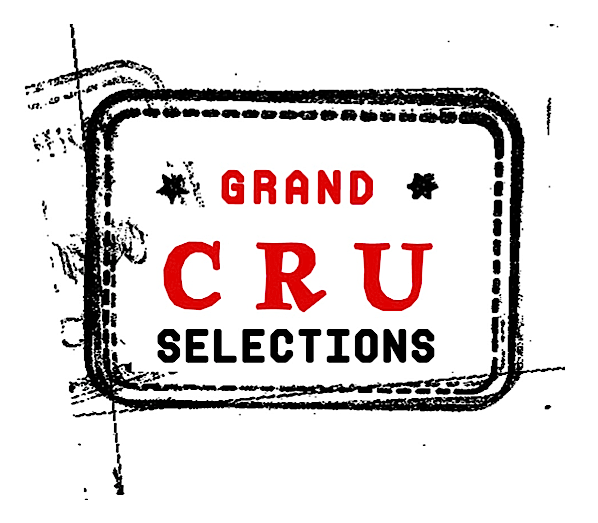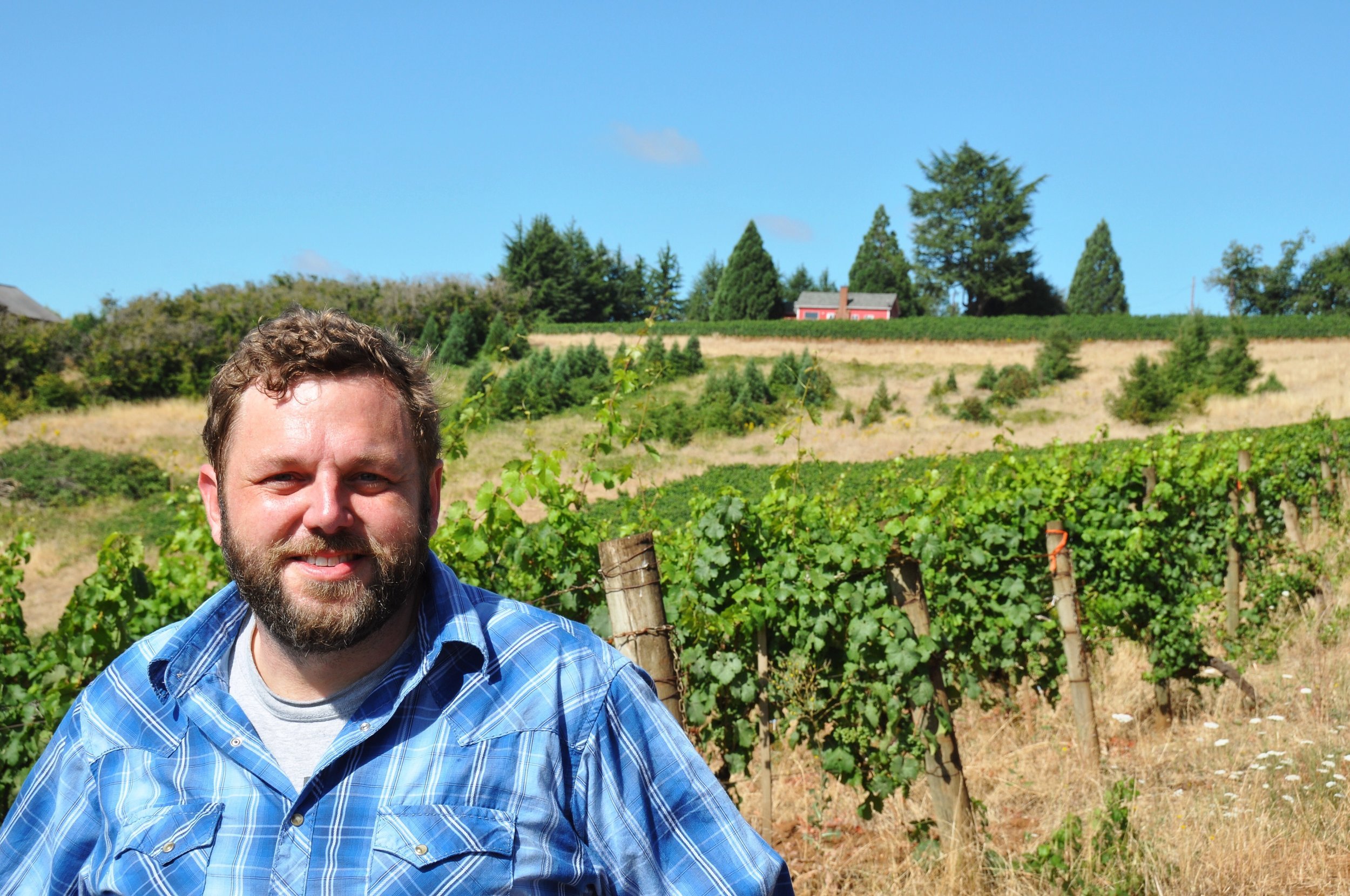Harper Voit
Willamette Valley, OR
Drew Voit
-
Drew spent the formative years of his winemaking career at Domaine Serene and Shea Wine Cellars where he worked with some of the best vineyard sites in the Willamette Valley. Harper Voit is the logical progression of that work: seeking out great vineyard sites, beautifully farmed fruit, and long-term relationships with growers. Drew also consults for a number of wineries in the Willamette Valley and operates a custom winemaking operation for small ultra-premium brands.
-
Nestled between the Coastal and Cascade Ranges, the Willamette Valley is the agricultural home of northern Oregon. Driving southwest from Portland, the valley is punctuated by a succession of rolling hills, which were islands dotting an ancient lake 13,000-15,000 years ago. The best vineyards in Oregon sit on these hills, producing exceptional fruit on what were ancient beaches. We seek out and develop relationships with farmers on this strandline, where lake once met land.
-
Barrel-fermented Pinot Blanc
Old Vine Riesling
Limited Production Pinot Noir
Drew makes 5 to 7 Pinot Noirs a vintage. The single vineyards are under 100 cases a year.
Wines
Maresh Vineyard Riesling
In 1959, Wisconsin natives Jim and Loie Maresh (pronounced ‘Marsh’) bought a 27 acre parcel of land in the hills above Dundee, OR, moving their family from Portland, OR to the Willamette Valley. After meeting neighbor and Oregon wine pioneer, Dick Erath, the Mareshes decided to plant wine grapes, putting the first vines in the ground in 1970. Today those vines are wide spaced (as was the standard for viticulture at the time), gnarly, and moss covered with roots extending deep into the volcanic Jory soil. The Riesling from Maresh is own-rooted, organic, and dry farmed with a naturally balanced crop requiring little human intervention.
2016 Maresh Riesling
12 grams of sugar,
80 to 100 cases a year.
All stainless.
Pinot Blanc Sur Lie
“Pinot Blanc” is the historic grape of Burgundy. - Drew Voit
Background:
There's only about 300 acres of Pinot Blanc in Oregon. It's the first place that real Pinot Blanc was planted. In California, the “Pinot Blanc” is actually Melon du Bourgogne. The distinction between Pinot Blanc and Chardonnay wasn't even made until the 1800s. Drew's idea with Pinot Blanc is to see what happens when it gets a more Burgundian inspired aging regimen.
Viticulture:
Sourced from Meredith Mitchell Vineyard - planted by Susan Meredith and Frank Mitchell in 1990, the vineyard sits nestled in the foothills of the Coast Range just outside McMinnville, OR. Rising from 450 - 650 ft in elevation, the soils are a mixture of uplifted marine sediments over fractured basalt, contributing to wines of great complexity.
Demeter Biodynamic® Certification in 2018
Winderlea and Results Partners have taken over the management of the vineyard with a long term lease on the property beginning with the 2014 vintage and farming under Demeter principles since they took over.
Vinification:
No new oak, he's using large format barrels (300 - 500 liter barrels). 9-10 months on lees, no ML, no battonage.
Pinot Blanc Elevage
Planted for Drew in 2010 in Beize, a vineyard right next to Seven Springs, on highest elevation parcel.
12 months on lees, whole thing on lees to stainless steel for reductive aging for 6 months. Full-on Burgundian treatment.
Pinot Blanc Singularite
Stolen budwood from Henri Gouges' Pinot Gouges.
12 months on lees, whole thing on lees to stainless steel for reductive aging for 6 months. Full-on Burgundian treatment.
Strandline Pinot noir
16 to 20 barrels a year.
A cross section of all the soils in the Willamette Valley: marine sediments, volcanic, alluvial, and loess. Strandline itself is a geological reference.
Bieze Pinot noir
Sitting high on the eastern ridge of the Eola-Amity Hills, the potential for Bieze seems limitless. Planted mostly in 2008 (with a few acres added in 2012), this young vineyard brims with possibility. The volcanic soils are a mix of Nekia, Jory and Ritner, resting 600 - 680 ft above sea level on varying aspects. The fruit is being gobbled up by small wineries ready to invest in what may be the best new vineyard in the AVA.
Drew contracted this vineyard before it was even planted. It also happens to be just above of Seven Springs. He currently gets fruit from three different sections of Bieze, with his favorite coming from a plotright next to the oldest vines of Seven Springs. Bieze is not religiously dry-farmed but the irrigation hasn't been turned on in years.
Antiquum Pinot noir
At 800 ft above sea level, Antiquum (Latin for "old ways") pushes the limits of pinot noir. Due to the site’s unique elevation, exceptionally well-drained and nutrient deficient Bellpine soil, and substantial diurnal shift, the pinot here is unlike any other. It produces what farmer Stephen Hagen describes as the perfect balance of depth, power, structure and finesse. Dry farmed using old school methods in a closed farm system (draft horses, compost, and natural weed suppression), the vineyard is treated as a holistic organism.
Antiquum is 50 miles away from Mcminnville,Oregon. The nights tend to be colder and the days warmer. The soil is pillowy basalt that formed as a result of an underwater lava flow which means that it's basalt on top but then sandstone underneath. This is very unique.
Terrarossa Pinot Noir
Terrarossa Vineyard is located at a high elevation, about 750 feet, in the middle of the Dundee Hills. It is only 2.2 acres of vines, planted at a relatively high density per acre and to three different selections of Pinot Noir.
The vineyard is owned by David and Heidi Pasqualini, who spared no expense or effort to establish their tiny estate vineyard. The elevation of the site is a true blessing, especially in warmer seasons, as the fruit grew towards ripeness slowly and late, resisting the pressures of the warm growing season. Natural high acidity with fresh red fruit flavors and lifted rose petal floral tones are the result, a classic Dundee Hills profile.
Drew spent a number of formative years as a younger winemaker working with fruit in the Dundee Hills and this is the first time that Harper Voit has worked with a site in the region that he grew to love years ago. In fact, we are now leasing the site and farming it ourselves going forward and as such, is the first estate property that Harper Voit can celebrate, with a few more to come in the near future.

